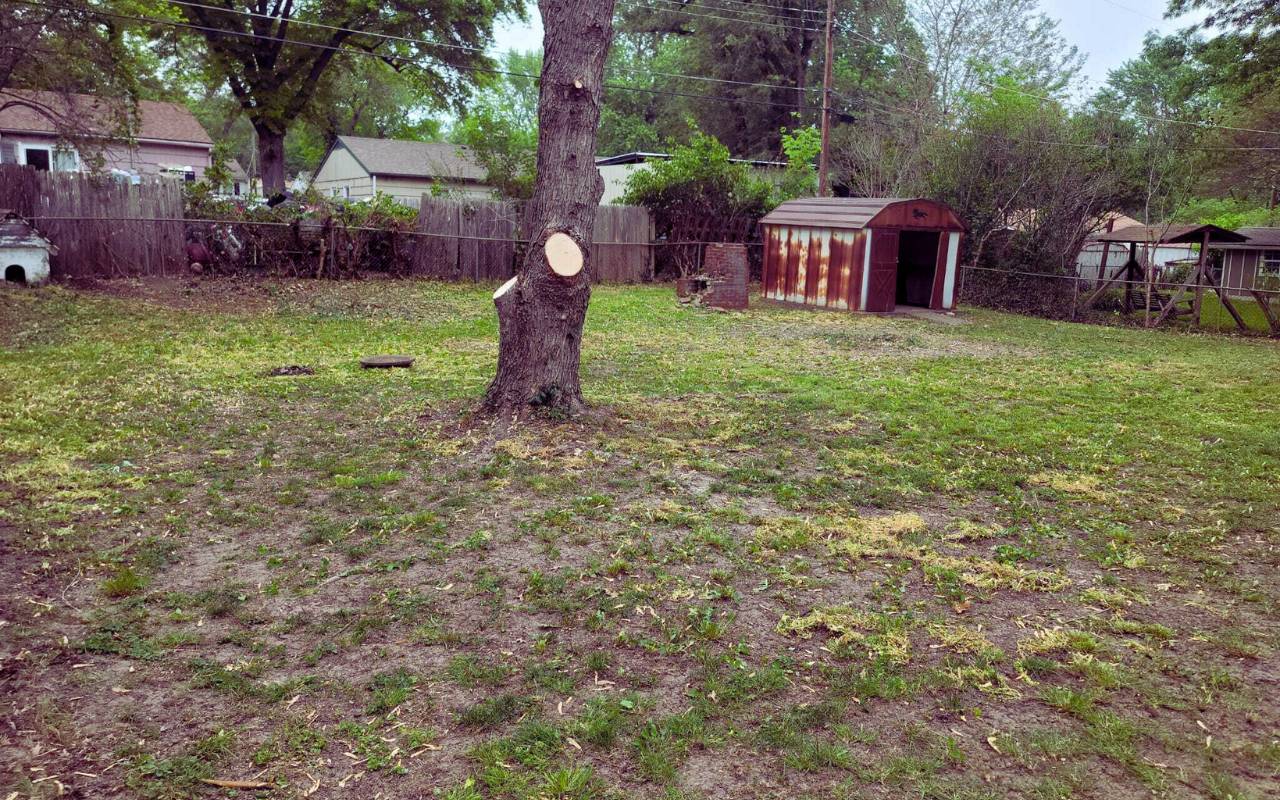
Homeowners in Kansas City face unique challenges when handling leaning trees. Although picturesque, they can create serious hazards near homes or structures. Understanding leaning tree risks and solutions in Kansas City helps prevent property damage and safety threats.
From identifying early warning signs to deciding on bracing or removal, every step matters. Timely inspections and maintenance protect your surroundings. With factors like driveway and sidewalk clearance, knowing when to act ensures lasting safety. For guidance, explore leaning tree risks and contact professionals when concerns arise.
Common Causes of Leaning Trees in Kansas City
Several natural and human factors lead to leaning trees in this region. Strong winds, heavy rainfall, and unstable soil can push trees off balance. Erosion from sudden downpours often weakens root systems. Drought followed by rainfall can also reduce soil firmness.
- Windstorms displace soil and shift shallow roots.
- Construction or digging near roots disrupts tree stability.
- Pests and disease damage essential root networks.
Understanding these causes allows homeowners to take early action and prevent future tilting or collapse.
Signs of a Dangerous Leaning Tree
Not all leaning trees pose immediate danger, but certain warning signs demand attention. A sharply curved trunk may reveal shifting weight. Soil cracks or gaps around the base show root movement. Watch for split bark, drooping limbs, or mushrooms near the roots.
These are clear signs a leaning tree is dangerous. Early detection prevents severe property damage and ensures personal safety.
Potential Risks and Damages
Leaning trees can endanger homes, vehicles, and people. When a tree tips completely, roofs and windows suffer damage. Proximity to house risks grow if branches hang toward living spaces. Falling debris can break fences, block driveways, or disrupt power lines.
Recognizing these hazards early allows for preventive action before severe storms cause destruction.
Importance of Timely Inspections
Regular inspections help spot hidden tree problems before they escalate. A certified arborist can assess roots, soil, and trunk conditions. They also recommend when to schedule inspection for each season.
Spring and fall inspections are ideal since trees face less stress. Professional evaluation provides peace of mind and long-term stability.
Driveway and Sidewalk Clearance
Driveway and sidewalk clearance ensures safety for pedestrians and vehicles. Overhanging branches can block access or cause scratches. Maintaining at least eight feet above sidewalks and ten feet above driveways is best practice in Kansas City.
- Prevent obstruction for vehicles and foot traffic.
- Reduce slip hazards from fallen branches and leaves.
- Keep drainage areas clear during heavy rainfall.
Good clearance protects daily movement and prevents unnecessary property wear.
Implementing Tree Reinforcement Solutions
When roots remain strong, reinforcement helps correct leaning trees. Cabling or bracing redistributes weight and reduces trunk stress. Ground anchors secure trees by stabilizing root plates. Soil aeration and composting enhance strength and recovery.
These practical methods extend tree life and preserve natural beauty while managing leaning tree risks and solutions in Kansas City.
Strategic Decision Making: Bracing vs Removal
Choosing between bracing vs removal depends on overall tree health. If roots and trunk remain solid, bracing restores balance safely. However, decayed or cracked trunks may require removal to eliminate risk.
- Bracing preserves canopy and aesthetic value.
- Removal prevents future property damage.
- Professional evaluation ensures the right choice for your landscape.
In areas with high proximity to house risks or public spaces, safety must come first.

Hiring Professional Tree Services in Kansas City
Hiring certified arborists ensures work is safe and precise. They evaluate tree structure, soil health, and tilt angle before suggesting solutions. Trusted professionals explain their methods clearly and provide written plans.
For expert assessment, reach out through the contact page to schedule an inspection or consultation.
FAQs
What causes a tree to lean suddenly?
Sudden leaning often results from windstorms, soil erosion, or damaged roots. Regular inspections help detect and manage early issues.
How do I know if my leaning tree is dangerous?
Look for cracked soil, tilted trunks, and dead branches. These are signs a leaning tree is dangerous and needs attention.
Should I brace or remove my leaning tree?
Bracing vs removal depends on health and stability. An arborist can recommend the safest solution for your situation.
When should I schedule a tree inspection?
Experts suggest when to schedule inspection during early spring or late fall. These seasons allow accurate assessment.
How far should trees be from my driveway or sidewalk?
Maintain safe driveway and sidewalk clearance to prevent obstruction. Proper spacing ensures both safety and convenience year-round.
Ensuring Safety and Protection
Taking preventive action ensures long-term safety from leaning tree risks and solutions in Kansas City. Early inspection, professional guidance, and regular maintenance are key. Whether bracing or removal, act promptly to protect your home and landscape.
To learn more about managing these issues effectively, visit leaning tree risks or request expert help through the contact page.
